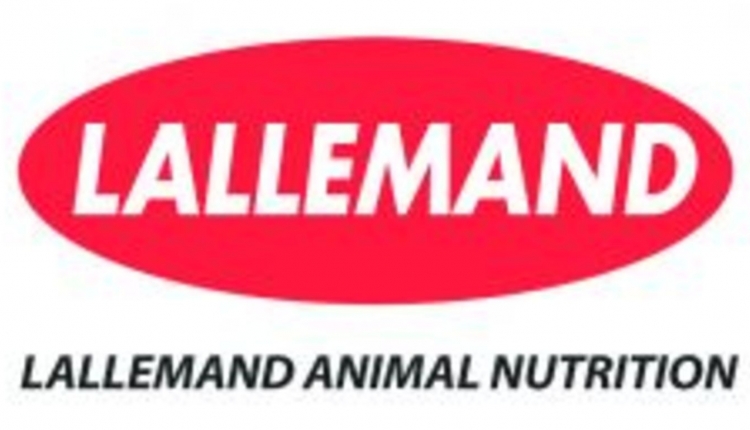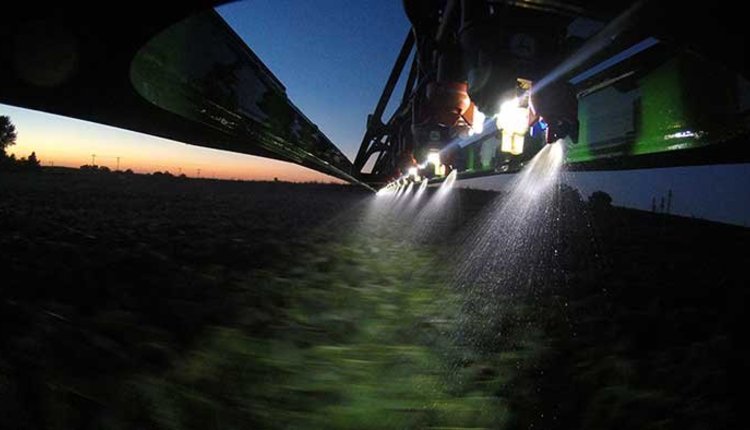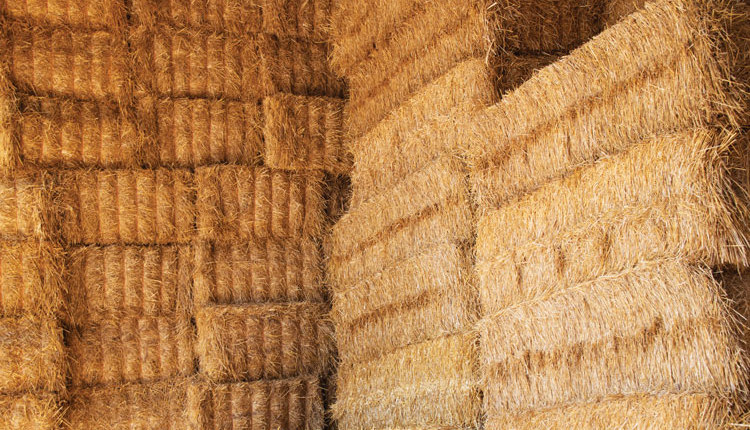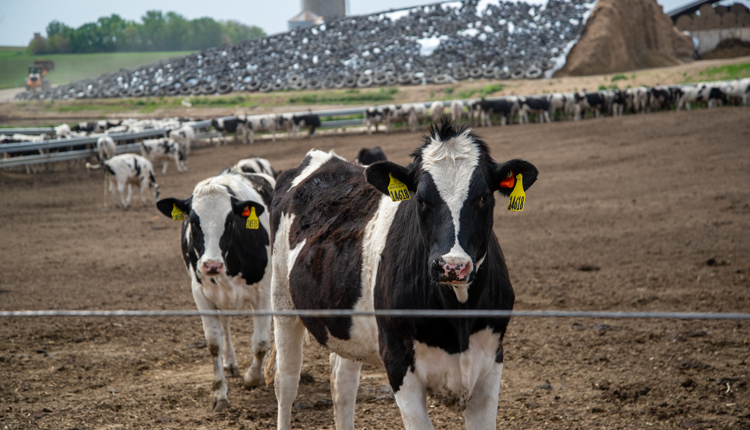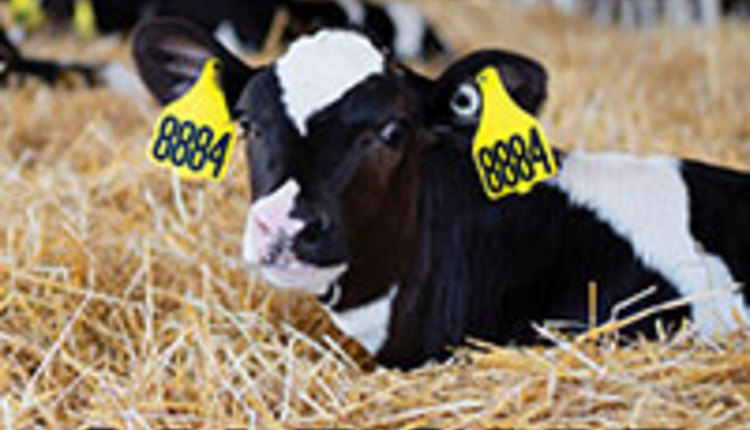The authors are a professor, graduate student and research associate in the department of Dairy and Animal Science at Penn State.

Feed is the largest cost in raising heifers. Control it, and you can make a tremendous impact on the bottom line. In fact, studies have shown that heifer feed costs may represent up to 60 percent of heifer raising expenses and 12 percent of total farm expenses.
We are often reminded of the importance of feed efficiency (pounds of milk per pound of feed) for lactating cows as it may affect costs and income. Yet, the concept is seldom mentioned for the growing heifer.
Countless opportunities exist
We measure feed efficiency for heifers in pounds of gain per pound of feed. There are many factors that can impact feed efficiency in the dairy heifer, including: genetics, forage quality (fiber and dry matter digestibility), feed intake level, growth rate or stage of growth, body condition or change in body composition, gestation, heat or cold stress (environmental stresses), and exercise level.
Genetics play a role in feed efficiency in two aspects. First, there is a genetic component of efficiency; some animals are more efficient than others at converting feed energy into productive energy, whether that is growth of muscle and bone or milk production. In addition, genetics in relation to body size is important since a greater body size relative to growth rate will elevate maintenance costs for energy, protein and most other major nutrients. The smaller the body weight of the heifer at a given age, the lower the maintenance requirements of that animal.
This being said, the heifer must be large enough to cycle for breeding purposes and, more importantly, large enough to calve successfully; both at appropriate ages. Therefore, growth at a given age cannot be compromised for the sake of improving feed efficiency.
It is an unavoidable fact that heifers' ability to use feed efficiently declines with age. Before puberty, heifer growth is mainly bone and muscle. After puberty, heifers gain a greater percentage of fat relative to lean tissue and are, therefore, less feed efficient. The case can easily be made for achieving a steady state of growth from birth to first heat, followed by a second rate of growth needed to achieve the desired body weight at calving. Research has shown that, before puberty, Holsteins should grow at about 1.8 pounds per day to maximize milk production in the first lactation.
Once a heifer has reached puberty, the rate of growth is dictated by the next critical control point: body weight at calving. We know from research that dairy heifers need to be at or near 85 percent of the body weight of your herd's mature cows at first calving. If they are not, first-calf heifers will expend excess energy during the first lactation for growth instead of milk production.
Heifers that are small relative to mature size will have dramatically lower feed efficiency in their first lactation as they will be growing, not producing milk. This phenomenon is a biological response to delayed growth before calving relative to mature body size. In addition, heifers that are in the last third of gestation will be less feed efficient as the rapidly growing fetus and related tissues will be drawing off more dietary energy and protein during that time period. Heifers that have not reached adequate size at calving are also at greater risk for having difficulty delivering their calves.
Housing plays a role
Environmental stresses and exercise are additional factors that affect maintenance requirements and, thus, will have direct effects on heifer feed efficiency. In this case, we find that any environment or housing systems that include well-bedded and managed free stalls or bedded packs will improve feed efficiency because of lower animal maintenance costs. However, any housing that allows heifers to be dirty and wet, or allows animals to be heat or cold stressed, will reduce feed efficiency.
Exercise also has effects; often these are small, but they can be great if heifers are walking long distances on a regular basis. In general, since heifers on pasture expend more energy to eat, their feed efficiency will be somewhat reduced compared to heifers in confinement.
A final, yet important, aspect to feed efficiency is the diet; both the amount being fed and the ration ingredients can influence feed efficiency. The more digestible the diet, the more feed efficient the heifer will be in growth. Therefore, in typical heifer diets, which are mostly forage, forage quality and fiber digestibility can greatly impact feed efficiency.
Replacing forage with concentrate improves feed efficiency to a point because grains and by-products usually have better digestibility than forages. In addition, when feeds with higher digestibility are fed to heifers, the amount of feed dry matter needed to meet the targeted body weight gain is lower. This results in less maintenance energy needed for the various digestion processes in the animal.
Replacing forages with grain can raise ration costs. When considering such a change, evaluate the total cost of alternative rations and keep in mind that changes may affect growth rates and number of days on feed. Typically, diets with a higher concentration of grain are not fed ad lib. High energy diets must be managed to avoid overfattening heifers.
When animals are fed more nutrient dense diets, and, therefore, less total dry matter per day, the digestive system adapts to the smaller amount being fed, and the rate of passage of feedstuffs out of the rumen is reduced. This allows rumen bacteria and protozoa to have a longer time to break down fiber and organic matter.
A wide range exists
Yearling heifers on high-quality feeds and forages can easily have a 5 to 1 ratio of feed to gain, but this can fall to 8:1 or more if the diet contains less digestible, average to poor-quality forage. One example of allowing feedstuffs to digest longer in the rumen by not having animals on full feed was demonstrated at the University of Wisconsin. In this study, heifers were fed 80 to 90 percent of what they would have eaten if they had unlimited access to feed. Researchers found feed efficiency improved by 29 percent in the heifers fed a controlled amount compared to heifers eating as much as they wanted.
A final point is that a few feed additives that improve rumen function and microbial digestion have been shown in research to improve heifer feed efficiency. These include ionophores and yeasts, both of which can affect feed and/or forage digestibility. Basically, anything that can improve digestibility of forage in the rumen will improve feed efficiency in a heifer.
Feed efficiency values for calves and heifers (feed to gain; DMI to ADG)Click here to return to the Calf & Heifer E-Sources
120925_602

Feed is the largest cost in raising heifers. Control it, and you can make a tremendous impact on the bottom line. In fact, studies have shown that heifer feed costs may represent up to 60 percent of heifer raising expenses and 12 percent of total farm expenses.
We are often reminded of the importance of feed efficiency (pounds of milk per pound of feed) for lactating cows as it may affect costs and income. Yet, the concept is seldom mentioned for the growing heifer.
Countless opportunities exist
We measure feed efficiency for heifers in pounds of gain per pound of feed. There are many factors that can impact feed efficiency in the dairy heifer, including: genetics, forage quality (fiber and dry matter digestibility), feed intake level, growth rate or stage of growth, body condition or change in body composition, gestation, heat or cold stress (environmental stresses), and exercise level.
Genetics play a role in feed efficiency in two aspects. First, there is a genetic component of efficiency; some animals are more efficient than others at converting feed energy into productive energy, whether that is growth of muscle and bone or milk production. In addition, genetics in relation to body size is important since a greater body size relative to growth rate will elevate maintenance costs for energy, protein and most other major nutrients. The smaller the body weight of the heifer at a given age, the lower the maintenance requirements of that animal.
This being said, the heifer must be large enough to cycle for breeding purposes and, more importantly, large enough to calve successfully; both at appropriate ages. Therefore, growth at a given age cannot be compromised for the sake of improving feed efficiency.
It is an unavoidable fact that heifers' ability to use feed efficiently declines with age. Before puberty, heifer growth is mainly bone and muscle. After puberty, heifers gain a greater percentage of fat relative to lean tissue and are, therefore, less feed efficient. The case can easily be made for achieving a steady state of growth from birth to first heat, followed by a second rate of growth needed to achieve the desired body weight at calving. Research has shown that, before puberty, Holsteins should grow at about 1.8 pounds per day to maximize milk production in the first lactation.
Once a heifer has reached puberty, the rate of growth is dictated by the next critical control point: body weight at calving. We know from research that dairy heifers need to be at or near 85 percent of the body weight of your herd's mature cows at first calving. If they are not, first-calf heifers will expend excess energy during the first lactation for growth instead of milk production.
Heifers that are small relative to mature size will have dramatically lower feed efficiency in their first lactation as they will be growing, not producing milk. This phenomenon is a biological response to delayed growth before calving relative to mature body size. In addition, heifers that are in the last third of gestation will be less feed efficient as the rapidly growing fetus and related tissues will be drawing off more dietary energy and protein during that time period. Heifers that have not reached adequate size at calving are also at greater risk for having difficulty delivering their calves.
Housing plays a role
Environmental stresses and exercise are additional factors that affect maintenance requirements and, thus, will have direct effects on heifer feed efficiency. In this case, we find that any environment or housing systems that include well-bedded and managed free stalls or bedded packs will improve feed efficiency because of lower animal maintenance costs. However, any housing that allows heifers to be dirty and wet, or allows animals to be heat or cold stressed, will reduce feed efficiency.
Exercise also has effects; often these are small, but they can be great if heifers are walking long distances on a regular basis. In general, since heifers on pasture expend more energy to eat, their feed efficiency will be somewhat reduced compared to heifers in confinement.
A final, yet important, aspect to feed efficiency is the diet; both the amount being fed and the ration ingredients can influence feed efficiency. The more digestible the diet, the more feed efficient the heifer will be in growth. Therefore, in typical heifer diets, which are mostly forage, forage quality and fiber digestibility can greatly impact feed efficiency.
Replacing forage with concentrate improves feed efficiency to a point because grains and by-products usually have better digestibility than forages. In addition, when feeds with higher digestibility are fed to heifers, the amount of feed dry matter needed to meet the targeted body weight gain is lower. This results in less maintenance energy needed for the various digestion processes in the animal.
Replacing forages with grain can raise ration costs. When considering such a change, evaluate the total cost of alternative rations and keep in mind that changes may affect growth rates and number of days on feed. Typically, diets with a higher concentration of grain are not fed ad lib. High energy diets must be managed to avoid overfattening heifers.
When animals are fed more nutrient dense diets, and, therefore, less total dry matter per day, the digestive system adapts to the smaller amount being fed, and the rate of passage of feedstuffs out of the rumen is reduced. This allows rumen bacteria and protozoa to have a longer time to break down fiber and organic matter.
A wide range exists
Yearling heifers on high-quality feeds and forages can easily have a 5 to 1 ratio of feed to gain, but this can fall to 8:1 or more if the diet contains less digestible, average to poor-quality forage. One example of allowing feedstuffs to digest longer in the rumen by not having animals on full feed was demonstrated at the University of Wisconsin. In this study, heifers were fed 80 to 90 percent of what they would have eaten if they had unlimited access to feed. Researchers found feed efficiency improved by 29 percent in the heifers fed a controlled amount compared to heifers eating as much as they wanted.
A final point is that a few feed additives that improve rumen function and microbial digestion have been shown in research to improve heifer feed efficiency. These include ionophores and yeasts, both of which can affect feed and/or forage digestibility. Basically, anything that can improve digestibility of forage in the rumen will improve feed efficiency in a heifer.
Feed efficiency values for calves and heifers (feed to gain; DMI to ADG)
- Calves on milk: 2:1 to 2.5:1
- Weaned calves (25 percent forage) 3:1 to 4:1
- Young heifers (50 percent high-quality forage) 4:1
- Heifers on TMR: 6:1 to 7:1
- Older heifers (poor/average forage) 8:1 or more; (has been shown to be 15:1 in some cases)
120925_602


